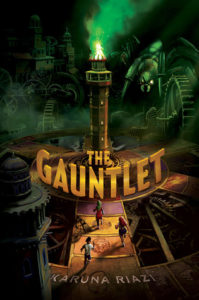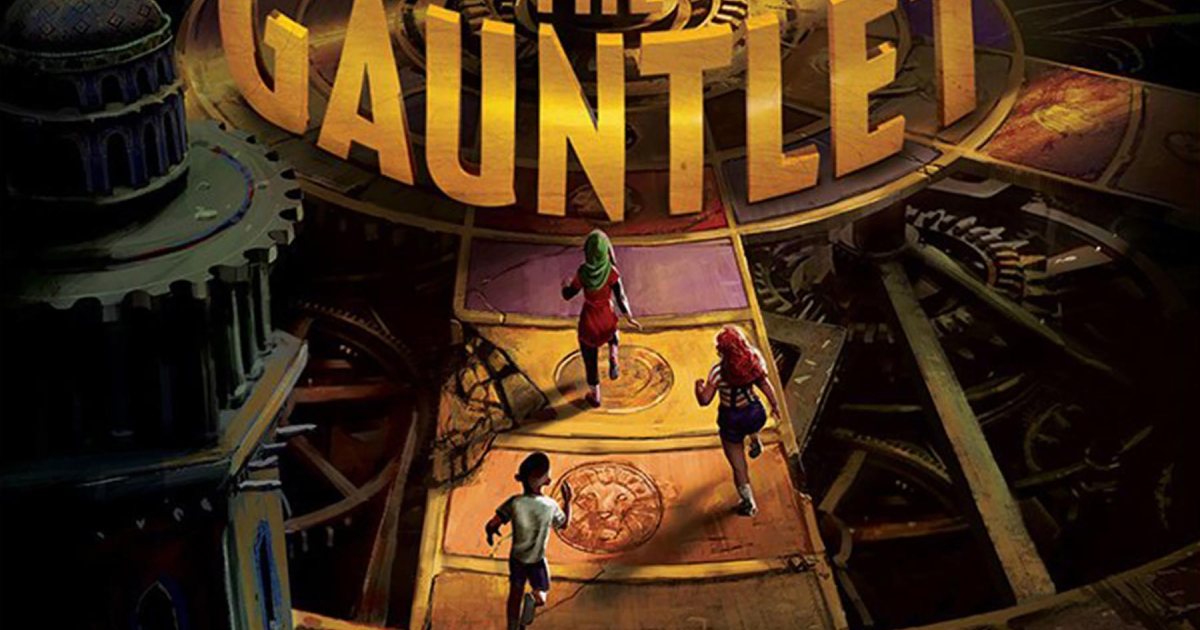 “The Gauntlet”
“The Gauntlet”
By Karuna Riazi
March 2017, 304 p.
ISBN: 1481486969
On Farah Mirza’s 12th birthday, one of her birthday presents mysteriously transforms into a magical board game called The Gauntlet of Blood and Sand and a voice emanates from the game, inviting her and her friends Essie and Alex to play. When Farah’s excitable 7-year-old brother, who also suffers from ADHD, unexpectedly jumps into the gameboard, Farah and her friends are forced to follow him into its world. The Gauntlet is set up as a massive city with an intricate layout and beautiful architecture. The gamemaster, who is herself a former player trapped in the game, informs the trio that in order to escape, they have to win three rounds of challenges designed by an omnipotent being known only as the Architect. The object is ultimately to destroy the city; each challenge reduces an area to sand, which begins to slowly reform as they continue around the gameboard. They are given an hourglass that keeps track of time remaining for each challenge and a map that changes and moves around to reflect the constantly-shifting world.
This book is listed as a children’s book (grades 3-7), and is a quick and fast-paced read. The challenges and the characters’ navigation of the city propel the story forward, and most of the time, it feels as if the reader is playing the game and figuring out the puzzles alongside the characters. Farah and her friends are intelligent, respectful, intuitive, logical, and mature for their age; Farah struggles internally with her desire to abandon the challenges in favor of searching for her brother, but ultimately chooses the more responsible option of continuing to play the game in order to ensure everyone’s escape.
The world-building of the novel and, by default, the game design and story-mapping described within it, are amazing. The Middle Eastern and South Asian influences on setting the steampunk theme and the game’s intriguing puzzles ensure that The Gauntlet is its own fresh take on the trapped-in-a-board-game premise. Farah’s identity as a Bangladeshi and a Muslim, which make her feel alienated at her new downtown Manhattan school in the real world, end up benefiting her enormously in the world of the game. Her background isn’t just mentioned once and then brushed aside, it reappears in the stories and lore she recalls, the vocabulary that is used, the puzzles, the items that show up in the game-world, etc. Another way Karuna Riazi incorporates Farah’s Bangladeshi culture into the book is through her detailed descriptions of the foods that her family eats, which also appear in the game-world; Riazi describes the dishes so vividly that the flavors and textures are easy to imagine, even for readers who may not be familiar with them. However, although it is not necessary, there may be a missed opportunity here to enrich the reading experience for young south Asian American readers of second or greater generations, especially those of mixed heritage, through illustrations.
Review by Ammi Bui, MLIS candidate
University of Washington

